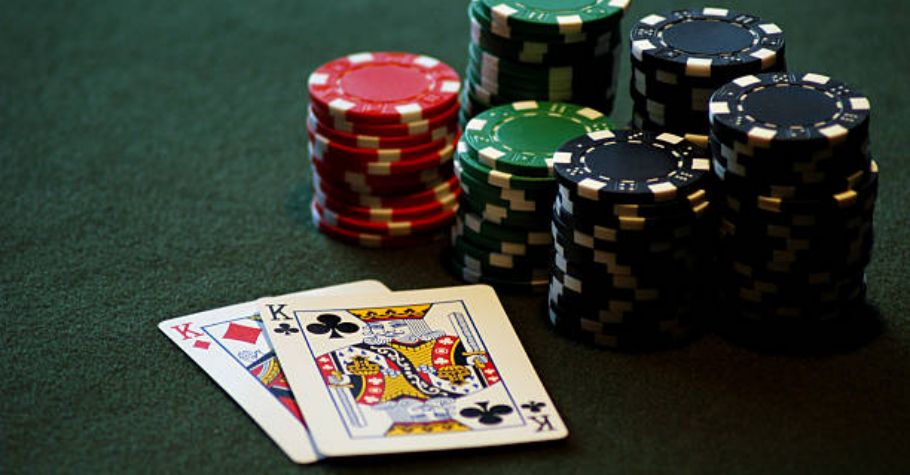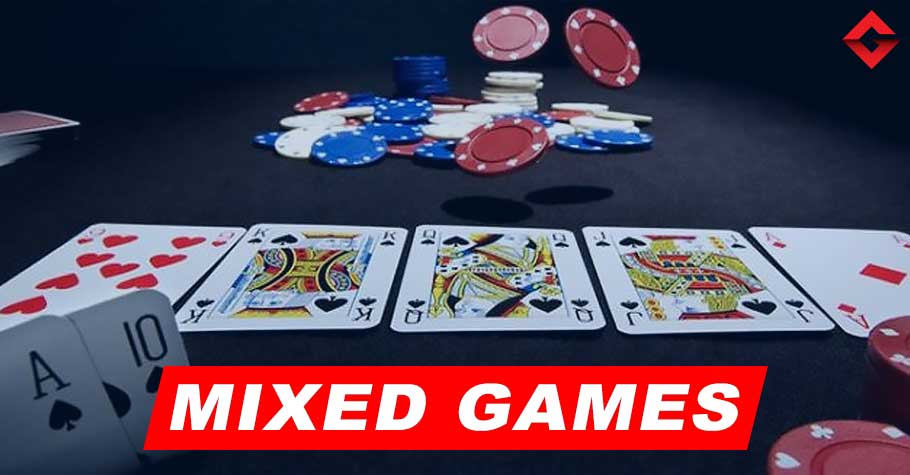 Poker
Poker
Tips On Playing Pocket Kings
Pocket kings are renowned as the second-best starting hand in Texas Hold’em, presenting a lucrative opportunity if played correctly. This article delves into expert tips for navigating different scenarios with pocket kings, ensuring you maximise their potential while minimising costly errors.
Unopened Pots With Pocket Kings
Pocket kings are considered one of the strongest hands in poker, warranting an open regardless of your position at the table. Similar to aces, the objective with pocket kings is to inflate the pot size, slow-playing this hand ill-advised.
Pocket Kings vs. an Open
When facing an open, a 3-bet with pocket kings is typically the optimal play. This move not only extracts value from your opponent but also aims to isolate the action to a heads-up post-flop scenario. It’s important to note that while pocket kings excel pre-flop, they can struggle in multiway pots.
Your 3-bet sizing should be influenced by factors such as your position and preceding action. If an opponent raises and you have position on them, consider 3-betting to around 2.5 to 3 times their raise. For instance, if the hijack (HJ) opens to $5 and you’re in the cutoff (CO) with pocket kings, a 3-bet to $12.5 – $15 would be appropriate.
Conversely, if an opponent raises and has position on you, opt for a 3-bet between 3.5 and 4 times their raise. For example, if the HJ opens to $5 and you’re in the small blind (SB) with pocket kings, a 3-bet to $17.5 – $20 is suitable.
The rationale behind increasing your 3-bet sizing when out of position is to make it more expensive for opponents to realise their equity post-flop, thus deterring speculative calls.
In scenarios where an opponent raises and another calls, consider a 3-bet between 4 and 4.5 times the initial raise when in position, and around 5 to 5.5 times when out of position.
NUT FLUSH/GUT SHOT VS POCKET KINGS! https://t.co/Wb45CyiZPW
Commentary @lapokerroundup @ballylivenow @ggpoker @commercecasino @maverickgaming #poker #live #livestream pic.twitter.com/RiKfHqwa6T
— Bally Live Poker (@BallyLivePoker) April 8, 2024
Pocket Kings vs. a 3-bet
When facing a 3-bet with pocket kings, the goal remains consistent: build the pot pre-flop. Proceed with a 4-bet or an all-in move, depending on the effective stack sizes. This aggressive approach not only asserts dominance but also capitalises on the strength of your hand before the flop.
When facing a 3-bet with pocket kings, your response should be calculated based on your position and the size of the 3-bet. If you have a position, consider a 4-bet between 2.2 to 2.5 times the size of the 3-bet. Conversely, if you’re out of position, a 3-bet ranging from 2.5 to 2.8 times the size of the 3-bet is advisable. For instance, when facing a $100 3-bet in position, a 4-bet to $220 to $250 is appropriate.
In rare instances, it might be strategic to flat-call a 3-bet with pocket kings, particularly in deep-stacked cash games against tight passive opponents. These opponents typically continue against 4-bets only with premium hands, folding their weaker holdings. However, such scenarios are uncommon and shouldn’t be a primary consideration.
Pocket Kings vs. a 4-bet
Pocket kings, much like pocket aces, thrive in the face of a 4-bet. When confronted with a 4-bet, the optimal play is often to move all-in. This approach avoids potentially awkward post-flop situations and prevents giving opponents the opportunity to hit a favourable flop.
Playing Pocket Kings on the Flop as an Overpair
When holding an overpair like pocket kings on the flop, betting for value is key, especially when in position. A standard bet size of around 30% of the pot on dry boards is recommended in both 3-bet and single-raised pots. Slow-playing should be reserved for instances where you have a strong read on your opponent and believe checking back will yield more value.
ALSO READ: What Are Mystery Bounty Tournaments?
Caution on Connected and Multi-way Flops
Connected flops, particularly those with three connected cards, pose a threat to pocket kings. Boards like Ts 9s 8d or 9c 8s 7c hit a caller’s range hard and can apply immense pressure. In such cases, it’s prudent to check your kings, both in and out of position, and aim to keep the pot small.
Similarly, in multiway pots, where you’re likely to face tighter ranges from opponents, exercise caution even with an overpair. Your equity diminishes significantly on the turn against multiple opponents, particularly three or more, increasing the likelihood of being outdrawn. As such, maintaining a conservative approach and minimising the pot size in these scenarios is advisable.
Playing pocket kings on ace-high flops presents a challenging scenario for many players, requiring thoughtful strategy to navigate effectively. While it may seem common for such flops to appear when holding pocket kings, the reality is different. Nonetheless, understanding how to play these situations can significantly improve your overall game. Here are some guidelines for handling pocket kings on ace-high flops.
Daniel Negreanu and Bill Klein played a huge pot on last night’s High Stakes Poker!
Klein has the best of it going in with his pocket kings, but @RealKidPoker has big plans after flopping a set with pocket nines!
📺 – Watch the new episode here: https://t.co/jIPVHV8wLD pic.twitter.com/CQo5xG4P6D
— PokerGO (@PokerGO) May 24, 2023
In 3-bet Pots
Despite the presence of an overcard on the board, it’s often advisable to continuation bet (c-bet) in 3-bet pots with pocket kings, even on ace-high boards. Your decision should consider your entire range, not just your current hand. As the 3-bet aggressor, ace-high boards typically favour you, making a c-bet a viable strategy. Optimal bet sizing in these scenarios is around 30%, allowing you to extract value from your opponent’s range.
In 4-bet Pots
Similar to 3-bet pots, the approach in 4-bet pots on ace-high flops doesn’t deviate much. Continuing to bet is generally the correct play. As the 4-bettor, these boards align better with your range, making a continuation bet beneficial. It helps keep your range uncapped and denies equity from your opponent. Consider using a smaller c-bet sizing, around 25% of the pot, in these situations. However, occasionally checking can be beneficial to balance your ranges, particularly based on your position and your opponent’s tendencies.
Knowing When to Fold
A crucial aspect of playing pocket kings effectively is recognising when to fold. While they are a strong hand preflop, they can be vulnerable post-flop, especially on ace-high boards. If your opponent shows strength by raising or calling your c-bet, it’s wise to consider folding or transitioning to bluff-catching mode, especially against aggressive opponents. Remember, pocket kings don’t have to win every hand, so preserving your chips in situations where you’re likely beaten is a key skill. Folding in such scenarios can actually be a profitable move, as each fold against a stronger hand saves you from losing more chips.
.@JosephHachem manages to fold his pocket kings in this spot during the @WPT Main Event!
An experienced and highly skilled poker player backing his read on his opponent to make the toughest fold pre-flop.#Poker #Skill #Sport #MindSport #Champions #Australia #WPT pic.twitter.com/53fgYhp2aq
— International Federation of Match Poker (@IFPoker) December 18, 2023
Conclusion
Among poker players, a common consensus emerges: the most significant error involving pocket kings is failing to fold them when it’s evident they’re no longer the best hand.
Preflop strength doesn’t guarantee victory; folding, at times, can be a profitable decision.
While this article offers valuable insights into common scenarios involving pocket kings, it’s essential to recognise that poker strategy is multifaceted and cannot be fully encapsulated in one single article.
For more such updates keep reading GutshotMagazine.com. Follow us on Facebook, Instagram, Twitter and Telegram.

With a Masters Degree in Journalism and Communication, Mrinal Gujare currently is cruising through an exciting genre of writing and editing at Gutshot Magazine. Apart from being an Editor, Mrinal is an avid reader and a former contemporary dancer. She is also perennially hungry for intriguing scoops from across the globe. No holds barred is the rule Mrinal follows in life.
More News
Top 15 Poker Rooms
-
PokerDangal
Deposit with code GSTDISCOUNT
Offer: Get 100% GST discount on deposits Register -
Natural8 India
Sign-up with Gutshot
Offer: Get extra 28% on all deposits Register -
Spartan Poker
Sign-up with referral code AFFGSMAG
Offer: FTD 50% Bonus Money up to ₹20K. Deposit code ‘ALLIN50’ Register -
Junglee Poker
Sign-up and get bonus
Offer: Up to ₹50,000* Register -
Calling Station
Sign-up with promo code 'AFFCSGUT'
Offer: 30% FTD bonus with code FTD30 Register -
WinZo Poker
Daily Winnings Up To ₹40 Crore!
Offer: Get ₹550 Joining Bonus For Free Register -
CristalPoker
First Deposit Bonus
Offer: 100% up to €2,000 Register -
WPT Global
WPT World Championship - Qualify with $5
Offer: 100% Welcome Bonus up to $1,200 Register
Newsletter
Thank you for subscribing to our newsletter.
This will close in 20 seconds























